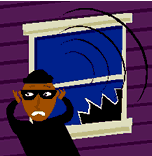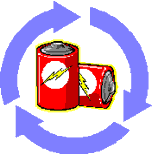Day Trading Computer
A good trading computer is essential for any trader. Below I will highlight the basic components that you need for your day trading system: hardware, software, Internet connection, and system protection.
Hardware for day trading
 This is a typical trading computer setup with two monitors connected to the same computer. This allows the day trader to expand the trading screen across both monitors as if was one big rectangular monitor. Thus, more graphs and other market data can be observed by the trader at the same time. |
Even though I do not have a Ph.D. in computers, I have used and helped people set up computers for day trading. I also work with trading computer professionals that assist my traders with specific set ups. Below I have provided the minimum suggested specifications for day traders followed by the preferred specifications (in parentheses):
Please note that for multiple monitors your video card has to have two output ports generally in a DVI and VGA format. If your video card does not have multiple output capabilities, you will need multiple video cards with ATI or nVidia chipsets that will allow you to connect more than one monitor. Unless you are a computer expert, try to order the system exactly like you want it (turnkey) from a firm that specializes in trading computers. |
Day trading software
 Quality software is the most essential element in a robust day trading system. I believe that RealTick is the best software currently in the market today for trading stocks. To trade currencies, such a sophisticated software is not necessary. |
Every serious day trader uses special software for trading. This software is installed on the trading computer mentioned above and through it the trader analyzes stocks, currencies, futures, etc. and places orders to buy and sell. Since the trading software is the most important component of a complete day trading system, it is very important that the software be well-known and widely used by traders. The software for trading stocks should have the following components:
The best software in this category that I know is called RealTick. It is given to you by your broker (direct-access broker that uses the RealTick platform) when you open a brokerage account. If you want to day trade currencies instead (forex trading), you don't need all the above features. Currency trading software comes in either a standalone or JAVA version. To test drive a trading simulator for 30 days, click on this link. |
Internet connection
 A fast Internet connection is a must for serious day traders. Nowadays, DSL and Cable modem service are very affordable (a T1 line is another high-end option for scalpers that need a top-of-the-line trading computer set up). |
Even if you buy the best computer that is currently available, without a fast Internet connection you cannot receive all of the streaming, real-time information (quotes, charts, transaction information, etc.) provided by your trading software. For that reason, a 56-Kbps regular phone line modem is not an ideal primary connection to the Internet (except in rare cases). Suggestions (if available):
I have used DSL for a few years already and think it's great (right now I use 3M-DSL from a local provider in my area). DSL is much faster than a 56-K modem. Even though I have no experience with the cable modem service, I know that many traders use it and it is also extremely fast. After you call your DSL company and order the DSL service (about $50 per month), it usually takes the company about 2 weeks to send you the modem and software you need to use the service. If you do not have DSL or Cable Modem service in your area, one option is always to trade in the broker's office, with one of the high-speed computers that are already set up there. |
System protection
 An antivirus program will prevent destructive computer viruses from running on your trading system. |
Antivirus Program: All you have to do is listen to the news today and you will probably hear a story about a new computer virus program that is causing havoc around the world. This is common practice nowadays. Many viruses have caused quite a stir in the last few years, and have damaged a large number of computers throughout the world. A computer usually gets a virus when a file infected with the virus is opened by the user. Most people obtain these files as email attachments. If your computer files are destroyed by a virus, you won't be able to trade. To avoid this, you should use an antivirus program like Norton Antivirus or McAfee VirusScan. There are some free virus scanners out there, but you can use them at your own risk. Most computers already come from the vendor with one of these two programs installed. |
 A firewall will block unauthorized access to your trading computer from the outside world. |
Firewall: If you use a high-speed Internet connection (like DSL or Cable Modem) you become vulnerable to "hacking." Hacking is when a person (hacker) breaks into (hacks) your computer from another computer. The hacker then takes control of the computer and can simply spy on you or delete the entire contents of your trading system. This can be a very serious setback for a trader. To prevent this from happening, a trader can use a "firewall." A firewall blocks unauthorized access to your trading computer from the outside world. A firewall can consist of additional hardware and/or software installed on the computer system. The easiest solution to set up is a software firewall. There are tons of different firewall software vendors in the market and many companies that provide free versions of their software. To learn more about firewalls, you can go to the Shield's Up section of Steve Gibson's website at www.grc.com. |
 A good back-system is essential to complete the day trading computer set up. A 56-K modem can serve as a back-up for the high-speed Internet connection and a UPS (or worse case, a surge suppressor) can be used to provide back-up power during blackouts and suppression of voltage surges. |
Back-up System: In a perfect world we wouldn't need a back up system, but we don't live in a perfect world. The most important forms of back-up for trading are:
Even though I've had very few cases when the DSL stops working during trading, it has happened. The same thing can happen to the Cable Modem service. When your high-speed service goes out, you can simply connect via your regular 56-Kbps modem via your phone line. Even though you cannot feed as much information through the 56-K service as you can with a high-speed connection, it still allows you to place trades and view some basic trading information. A UPS allows your trading computer to run on back-up power when there is a blackout. Even though you cannot run on back-up power indefinitely (based on the limitations of the UPS), it does allow you to close any positions that you do not want to leave open as well as save anything that you were working on. A UPS will also provide protection from voltage surges that can damage your trading computer. In the United States we have the advantage that the power is pretty reliable (except during Hurricane Season in South Florida!), so if you don't want to buy a UPS right away when you start trading - that's OK, but you should at least use a surge suppressor ($20 to $50) to protect your trading computer from sharp fluctuations in power which can easily damage or shorten the life of your trading equipment. |
What others are saying:
AWESOME SITE! I cannot tell you how much your site has helped me with my
trading. And I'm glad I found you right about when I first started...I
have done very well so far and large part of that success is due
to your suggestions... Dean P. Read More...
No testimonial used on this website is indicative of future results. Past results are not indicative of future results. The individuals quoted in the testimonials used were not paid to be quoted. The testimonials used on this website are unsolicited and are non-representative of all visitors.

